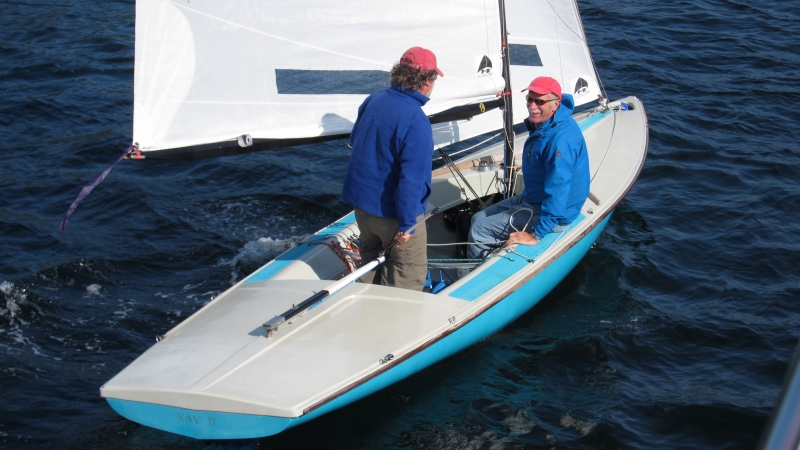The Flying Fifteens
The Flying Fifteen Fleet in 2024
There is renewed interest and energy in the SISC Flying Fifteen (F15) fleet this spring. Details are constantly emerging, and there are opportunities for Club members to experience the thrill of this type of dinghy sailing. The group has just welcomed and unpacked a container from Australia containing four Flying Fifteens to use in local waters. See posts below. Group members will be able to sign out a boat to use. Watch for details!
May 4th proved to be a very special Flying Fifteen Day at the Sailing Club. Member Jill Oakes organized a hands-on day featuring a visit by champion international F15 sailor Jenny Price from New Zealand. Read all about the action-packed day here. Find more photos of that day and other current F15 activities through the F15 Club Photos link.
You can access a video of the Flying Fifteens out sailing last summer on a beautiful day in Ganges Harbour by clicking here.
You can also watch a video of Club member Jill Oakes, Flying Fifteen enthusiast and new owner of F15 Robyn Hood, practicing to find the best way to get back into a Flying Fifteen if you get dumped into the water. After three tries, she had it. A useful few minutes to watch, in case it happens to you: watch it here.
Jill also visited New Zealand in early 2024 to cycle to and sail in their Flying Fifteen Nationals event. Click to see a write up about her journey in Yachting and Boating Quarterly (scroll to page 70) and another in Live Sail Die.

 .
.







A bit of history…in the beginning…
According to Uffa Fox the design for the boat came to him fully formed while he luxuriated in the bath tub. Sketched out on a magazine with a pencil while floating in the hot water, he got down her finer points and created the world’s first planing keel boat. “Her mast, rig, the shape of her hull,, the layout of her decks, her shark like fin keel and her rudder, were as clear in my mind’s eye as though the first boat was built and sailing on her trials.”
According to SISC Flying Fifteen sailor Martin Herbert, writing in 2013, “Uffa Fox was a living legend when I was growing up and starting to sail and I was an avid collector of his books on boat design. Throughout my life his influence crisscrossed my sailing adventures, pointed me towards what is valuable in a boat and guiding me to enjoying the sport to its fullest. Over the years I have seen many Uffa Fox boats, ran my hands over Brynhild at the Royal Canoe Club in London, and admired his early I-14’s, the first planing boats, in action. When it came time for me to retire and move to Saltspring it was also time to start thinking about a boat with a keel, with slower reaction times to match my fading abilities. At exactly the right moment Uffa Fox showed up again in the form of the Kay D. I also met Tony Meek, a fabulous sailor who was also heading in the Kay D‘s direction from the other side, looking for a boat that was more exciting to sail. Tony knew everything about sailing on the sea and tides and local winds that I did not, and he knew about how to handle boats too heavy to pick up and carry. I brought my 50 years of racing experience, mostly in big fleets of boats all the same, with very close racing. For Tony it was completing the circle as he had crewed on Flying Fifteens in his youth.”
To read the rest of Martin’s 2013 history of the Flying Fifteen and its start at SISC, click this link. As he says, “You owe it to yourself to find your way aboard one of these little rockets for a test sail.”






